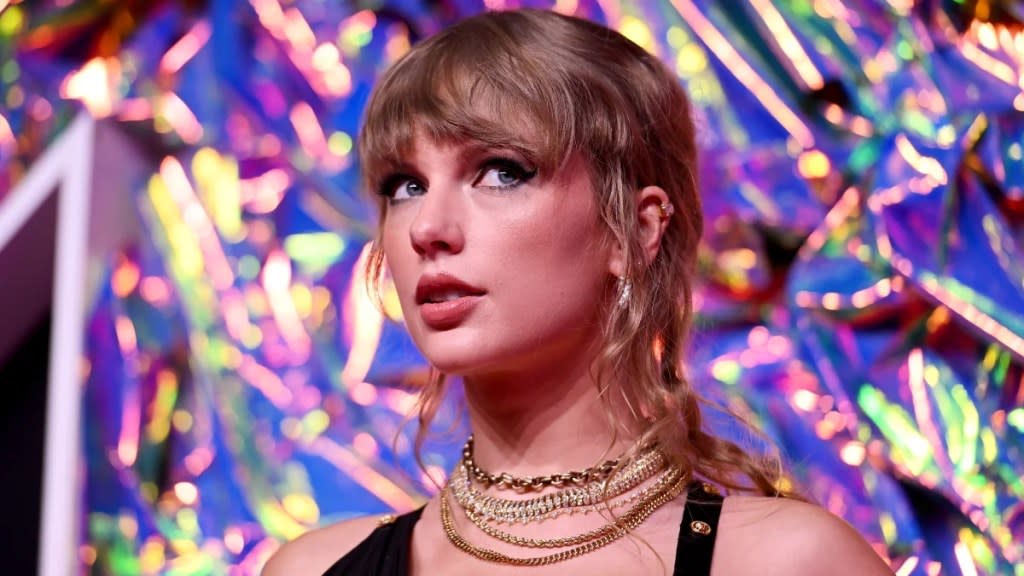Taylor Swift Associates Slam New York Times Piece Speculating on Her Sexuality

- Oops!Something went wrong.Please try again later.
- Oops!Something went wrong.Please try again later.
The New York Times published an editorial this week openly speculating about Taylor Swift’s sexuality. This wasn’t the first time the topic of “is she or isn’t she” has been raised online (type “Gaylor” into Reddit and see what happens), but it’s the first time a mainstream publication has done such a prominent piece on the question.
People described as “associates” of the singer expressed frustration with the article to CNN, while not specifically denying its claims. As one person described by CNN as “close to the situation” anonymously told the outlet, “Because of her massive success, in this moment there is a Taylor-shaped hole in people’s ethics. This article wouldn’t have been allowed to be written about Shawn Mendes or any male artist whose sexuality has been questioned by fans.”
“There seems to be no boundary some journalists won’t cross when writing about Taylor, regardless of how invasive, untrue, and inappropriate it is — all under the protective veil of an ‘opinion piece,'” the person added.
The 5,000-word piece by opinion editor Anna Marks is a deep dive into a question that many fans have asked for years: was Taylor Swift trying to come out when she released 2019’s “Lover”? The evidence presented by Marks is compelling: promotion for “Lover” featured rainbows and “pastel shades of blue, purple and pink, colors that subtly evoke the bisexual pride flag.”
Marks goes on to add that on April 26, 2019 — which happened to be Lesbian Visibility Day — Swift released the video for her single “ME!” which showcased the singer dancing at a pride parade and “turning down a man’s marriage proposal in exchange for a … pussy cat.” Months later in June, her video for “You Need to Calm Down” featured queer celebrities including Ellen DeGeneres, the hosts of “Queer Eye” and Billy Porter.
That same month, Swift said in an interview with Vogue that the video was her attempt at allyship. “Rights are being stripped from basically everyone who isn’t a straight white cisgender male,” she explained. “I didn’t realize until recently that I could advocate for a community that I’m not a part of.”
The trajectory of promotion for “Lover” was interrupted by news that Swift’s former manager Scooter Braun had purchased the rights to her masters, and the planned tour for the record was cancelled due to the outbreak of the COVID-19 pandemic. Swift announced plans to rerecord all of her music, and like a lot of us, she retreated from the public — while also release two more acoustic pandemic-era albums.
In her piece, Marks allowed that her queer-eyed take on “Lover” might be “merely a mirage, born of earnest projection” and wrote that the singer has managed to “simultaneously capture two dominant cultures — traditional and cosmopolitan” with her work.
“To maintain the stranglehold she has on pop culture, Ms. Swift must continue to tell a story that those audiences expect to consume; she falls in love with a man or she gets revenge,” Marks wrote. “As a result, her confessional songs languish in a place of presumed stasis; even as their meaning has grown deeper and their craft more intricate, a substantial portion of her audience’s understanding of them remains wedded to the same old narratives.”
Marks notes her awareness that raising this question may seem inappropriate for an outlet like the Times. As she put it, “I know that discussing the potential of a star’s queerness before a formal declaration of identity feels, to some, too salacious and gossip-fueled to be worthy of discussion.
“They might point to the viciousness of the discourse around ‘queerbaiting’ (in which I have participated); to the harm caused by the tabloid press’s dalliances with outing; and, most crucially, to the real material sacrifices that queer stars make to come out, again and again, as reasons to stay silent,” Marks continued.
But still, she added, “the stories that dominate our collective imagination shape what our culture permits artists and their audiences to say and be. Every time an artist signals queerness and that transmission falls on deaf ears, that signal dies. Recognizing the possibility of queerness — while being conscious of the difference between possibility and certainty — keeps that signal alive.”
The post Taylor Swift Associates Slam New York Times Piece Speculating on Her Sexuality appeared first on TheWrap.

